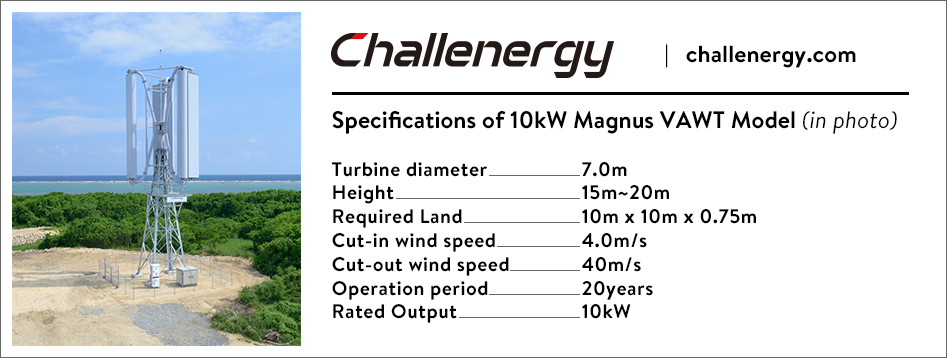Magnus Vertical Axis Wind Turbine (Magnus VAWT)

The world’s first Magnus Vertical Axis Wind Turbine (Magnus VAWT) is the next generation turbine that utilizes the principle of the “Magnus effect” in combination with a vertical axis orientation. This allows the Magnus VAWT to control power generation amidst varying wind speeds and direction.
As compared to the horizontal axis wind turbines utilizing conventional propellers, the Magnus VAWT has lower manufacturing costs, less noise, and has lower risk of bird strikes. It is designed to withstand winds of up to 340kph, making it suitable for typhoon prone areas. The demonstration unit in Ishigaki Island, in Okinawa, Japan has been shown to be able to continue power generation even during typhoons.
The Magnus VAWT uses satellite communication from the leading satellite company of Japan, Skyperfect-JSAT, primarily in order to monitor its performance. The satellite communication technology has sufficient capacity to be able to provide wifi technology to nearby communities for internet access in ordinary time. However, as the system is able to continue generating power even in times of typhoon disasters, not only will the Magnus VAWT be able to provide electricity in these times of calamity, it will also be able to provide stable communications thereby improving disaster response, reducing and mitigating disaster risks, especially in isolated areas.
